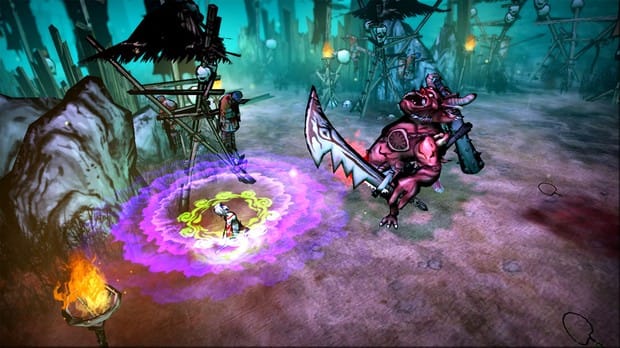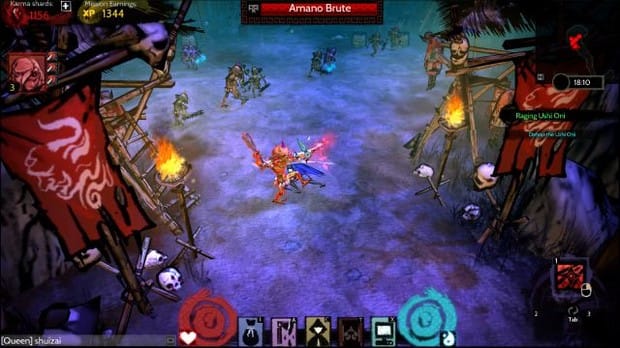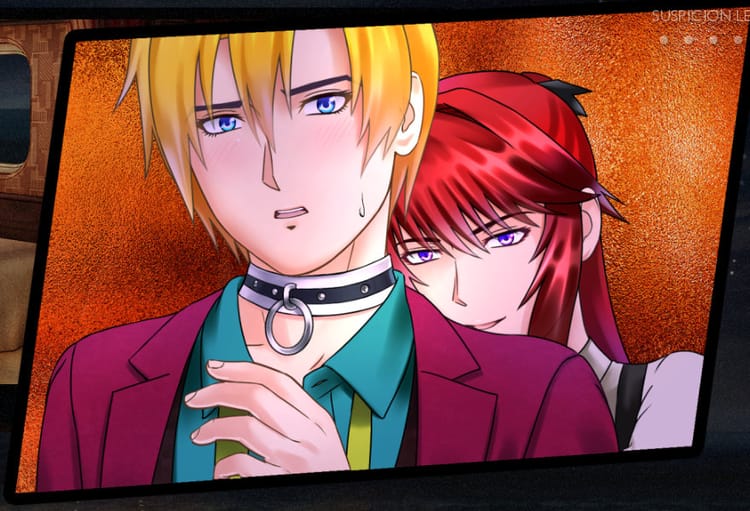Akaneiro: Demon Tone convinces you not to play it

The literal translation of Akaneiro: Demon Hunters is “The Red Tone.” This brings to mind the crisp sound of a body crashing into a heap of dry leaves, accompanied by a generous fountain of entrails. It is an appropriate name for an action-RPG that riffs on both Little Red Riding Hood and Japanese mythology, and the install screen certainly delivers on the promise of this mash-up. The art is reminiscent of wood block prints and late-80s anime, when it still had a visible Western influence. As I waited for the game to load, my adrenaline began to pump; I was ready for a fairy tale bloodbath.
Then the game started, and I moved the mouse. The cursor waited a moment before responding; it had a dragged, floaty feel to it. For an ostensible Diablo clone, a laggy mouse makes a bad first impression.

Things went downhill from there.
The levels were little more than alleys full of wolves. I would wade through, destroying everything with a gauntlet of mouse-clicks, using abilities more out of a sense of curiosity than utility. Eventually, I’d get to the exit. There was no need for exploration, because the levels were so straightforward. There was no thrill of the hunt, because the wolves were everywhere and they were so dumb that I could just click my way through them. It was more like weeding than questing.
I found myself clicking on an item—on its exact pixel!—a dozen or so times without picking it up.
Combat and exploration are the twin hallmarks of the action RPG, but in Akaneiro you’re fighting against papier-mâché, not the bulk and flesh battles of greater games. Without limber, sprightly input, there’s no connection to the demon hunter’s movement. I found myself clicking on an item—on its exact pixel!—a dozen or so times without picking it up. Elsewhere I’d click maniacally next to a wolf, trying to dodge around a pack and line up a rail attack, only to target a lone wolf instead, and fire the spell in the entirely wrong direction.
But here’s the rub: for all this mechanical unreliability, I soared through these levels just fine. At the end of the level I was rewarded with a shining high score despite the utter ineptitude of my on-screen avatar.
It is here that Akaneiro veers from inept to outright nefarious.
The game, in other words, is easy, so much so that playing terribly still results in success. This begins in the tutorial and continues as the difficulty ostensibly arced upward. One just sits there, clicking, eyes glazing over.
I headed back to the menu to raise the difficulty, but it is here that Akaneiro veers from inept to outright nefarious. There are more difficult versions of each level, but they have to be unlocked sequentially. I would have to trudge through that same wolf garden four times to get a challenge. What’s worse, every time you finish a level it “locks” for an ever-increasing amount of time, forcing you to go slog through another cakewalk before getting a chance (maybe) to re-play something challenging. By the time the difficulty would be interesting, you would’ve already seen the entire level so many times that it’d still be boring. It’s a grind from start to finish.

This is supposed to be an adventure! I want to get lost, for the sense of accomplishment when I find a path through the fog of war. I want to fear for my character’s life, truly, so that victory tastes all the sweeter. Instead, Akaneiro puts me on repeat, recycling the same landscape, wading through the same predictable enemies, waiting for a “good part” that never comes.
Structure matters in any story, but especially in an adventure. When Peter Jackson decided to stretch The Hobbit to three movies, he muddied the narrative water. Extra characters and sub-plots and backstory and exposition turned a focused journey into a sprawling bore. Akaneiro, too, forgets what an adventure is supposed to be. By not paying attention to the formal elements of the action RPG, a promising premise is crushed. Without the basic components that drive the genre, this “adventure” just isn’t. It’s a snooze.



